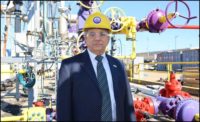This symposium focused on implications of climate change and increasing atmospheric carbon dioxide for the important fruit, vegetable, and ornamental horticulture industries, said David Wolfe, Cornell professor of horticulture and one of the symposium's organizers. The meeting will bring together climate scientists, horticultural researchers, extension educators, horticultural businesses, environmental and gardening groups, and representatives from public gardens.
Few scientists disagree on global warming. The question is how will global warming affect regions. "While virtually all models predict that global -- and in many instances, regional -- temperatures will rise through the next century as carbon dioxide levels approach twice the pre-industrial era level, there is disagreement on changes in precipitation amount," said DeGaetano, Cornell associate professor of climatology and the director of the Northeast Regional Climate Center at Cornell. "In a situation where the globe is going to warm, there are physical reasons for precipitation to increase, particularly during the winter," he said.
In his presentation, DeGaetano explained how the western United States likely will see more winter precipitation but, overall, less snow, while the Midwest and Great Plains may see an exaggeration of the water cycle. And this means, he said, more extreme climate events, like drought and flooding.




